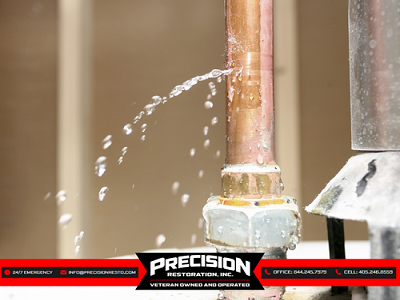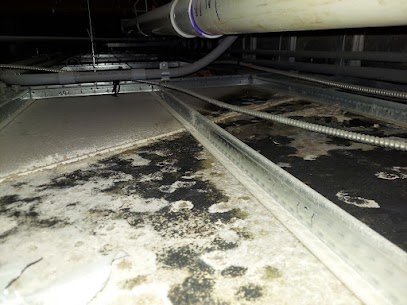Water damage and mold growth in basements can be a homeowner’s nightmare, leading to costly repairs and potential health hazards. However, with the right preventative measures in place, you can safeguard your basement from these common issues. In this guide, we’ll explore effective strategies to help you protect your basement and preserve its structural integrity. From identifying common sources of water intrusion to implementing proactive maintenance routines, we’ll cover everything you need to know to keep your basement dry and mold-free. Whether you’re dealing with seasonal flooding, plumbing leaks, or poor drainage, there are practical steps you can take to mitigate the risks and ensure a healthy environment below your home. By understanding the causes of water damage and mold growth and taking proactive steps to address them, you can enjoy peace of mind knowing that your basement is well-protected. Let’s dive into the essential tips and techniques to prevent water damage and mold growth in your basement.
The Importance of Proper Basement Waterproofing

Basements are often susceptible to water infiltration, leading to costly damage and health hazards such as mold growth. To safeguard your home and family, it’s crucial to understand the significance of proper basement waterproofing. This comprehensive guide explores why waterproofing matters, the potential consequences of neglecting it, and the various methods available to protect your basement from water damage.
Protecting Your Investment
Your home is one of the most significant investments you’ll make in your lifetime. Basement waterproofing helps safeguard this investment by preventing water damage that can compromise the structural integrity of your property. Without proper waterproofing, water intrusion can lead to foundation cracks, weakened walls, and other structural issues that diminish your home’s value and safety.
Health and Safety Concerns
Beyond property damage, water infiltration into your basement poses health and safety risks for you and your family. Damp, humid environments create ideal conditions for mold and mildew growth, which can exacerbate respiratory issues and allergies. Mold spores can also spread throughout your home, affecting indoor air quality and potentially causing long-term health problems. Proper waterproofing helps maintain a dry, healthy living environment by preventing mold growth and minimizing moisture levels in your basement.
Preventing Costly Repairs
Water damage can wreak havoc on your home’s interior, requiring expensive repairs and renovations. From damaged flooring and furniture to ruined belongings stored in the basement, the financial toll of water infiltration can quickly add up. Basement waterproofing acts as a proactive measure to mitigate these risks, saving you money in the long run by preventing the need for extensive repairs and replacements.
Enhancing Living Space Utilization
Many homeowners utilize their basements as additional living space, whether for recreation rooms, home offices, or guest quarters. However, a damp or flooded basement is uninhabitable and limits your ability to fully utilize this valuable square footage. By investing in proper waterproofing, you can transform your basement into a functional, comfortable living area without worrying about water-related issues.
Preserving Valuables and Keepsakes
Basements often serve as storage areas for valuable belongings, cherished keepsakes, and important documents. Unfortunately, water damage poses a significant threat to these items, potentially causing irreparable harm. Proper basement waterproofing provides peace of mind, knowing that your belongings are protected from the damaging effects of moisture and flooding.
Maintaining Your Basement Drainage System
A functional basement drainage system is essential for preventing water damage and mold growth in your home’s lower levels. By ensuring that your drainage system is properly maintained, you can effectively manage rainwater and groundwater, keeping your basement dry and protected. This guide explores the importance of maintaining your basement drainage system and provides practical tips for keeping it in optimal condition.
Understanding Basement Drainage Systems
Basement drainage systems are designed to collect and redirect water away from your home’s foundation, preventing water infiltration into the basement. Common components include interior drains, exterior French drains, and sump pumps. Understanding how these systems work together to manage water flow is key to effective maintenance.
Regular Inspection and Cleaning
Regular inspection and cleaning are essential for maintaining your basement drainage system. Inspect interior drains, gutters, downspouts, and exterior drainage channels for debris, clogs, and damage. Remove any obstructions and clean out accumulated debris to ensure unimpeded water flow.
Gutter and Downspout Maintenance
Gutters and downspouts play a critical role in directing rainwater away from your home’s foundation. Ensure that gutters are securely attached and free of leaks. Clean gutters and downspouts regularly to prevent blockages caused by leaves, twigs, and other debris. Consider installing gutter guards to minimize maintenance requirements.

Proper Grading and Landscaping
The grading around your home’s foundation should slope away from the house to prevent water from pooling near the basement walls. Inspect the landscaping around your home and ensure that soil and mulch are graded away from the foundation. Avoid planting trees and shrubs too close to the house, as their roots can disrupt drainage systems.
Testing and Maintaining Sump Pumps
If your basement is equipped with a sump pump, regular testing and maintenance are crucial to ensure its proper operation. Test the sump pump periodically by pouring water into the sump pit and verifying that the pump activates and effectively pumps water away from the foundation. Clean the pump and pit as needed to prevent clogs and malfunctions.
Effective Strategies for Basement Mold Prevention
Mold growth in basements is not only unsightly but also poses health risks to occupants. Implementing effective mold prevention strategies is essential for maintaining a healthy indoor environment. Here are key points to help you keep your basement mold-free.
- Control Humidity Levels: Keep indoor humidity below 60% to discourage mold growth. Use dehumidifiers and ensure proper ventilation to remove excess moisture from the air.
- Inspect for Leaks: Regularly inspect your basement for leaks, including plumbing leaks, roof leaks, and foundation cracks. Promptly repair any leaks to prevent water infiltration and subsequent mold growth.
- Improve Ventilation: Proper ventilation is crucial for preventing moisture buildup in basements. Install exhaust fans, open windows when weather permits, and consider adding vents to improve airflow.
- Use Mold-Resistant Materials: When remodeling or finishing your basement, choose mold-resistant materials such as mold-resistant drywall and flooring options. These materials are designed to inhibit mold growth even in damp environments.
By implementing these effective strategies for basement mold prevention, you can create a healthier and more comfortable living environment for you and your family.
Conclusion
Precision Restoration, Inc. in Oklahoma City, Oklahoma, we are dedicated to helping homeowners prevent water damage and mold growth in their basements. Through our expertise and commitment to excellence, we offer comprehensive solutions tailored to the unique needs of each client. By implementing proactive measures such as proper drainage systems, regular inspections, and timely repairs, we ensure the longevity and safety of our customers’ properties. With our trusted services, homeowners can rest assured knowing that their basements are protected from potential water damage and mold issues.



